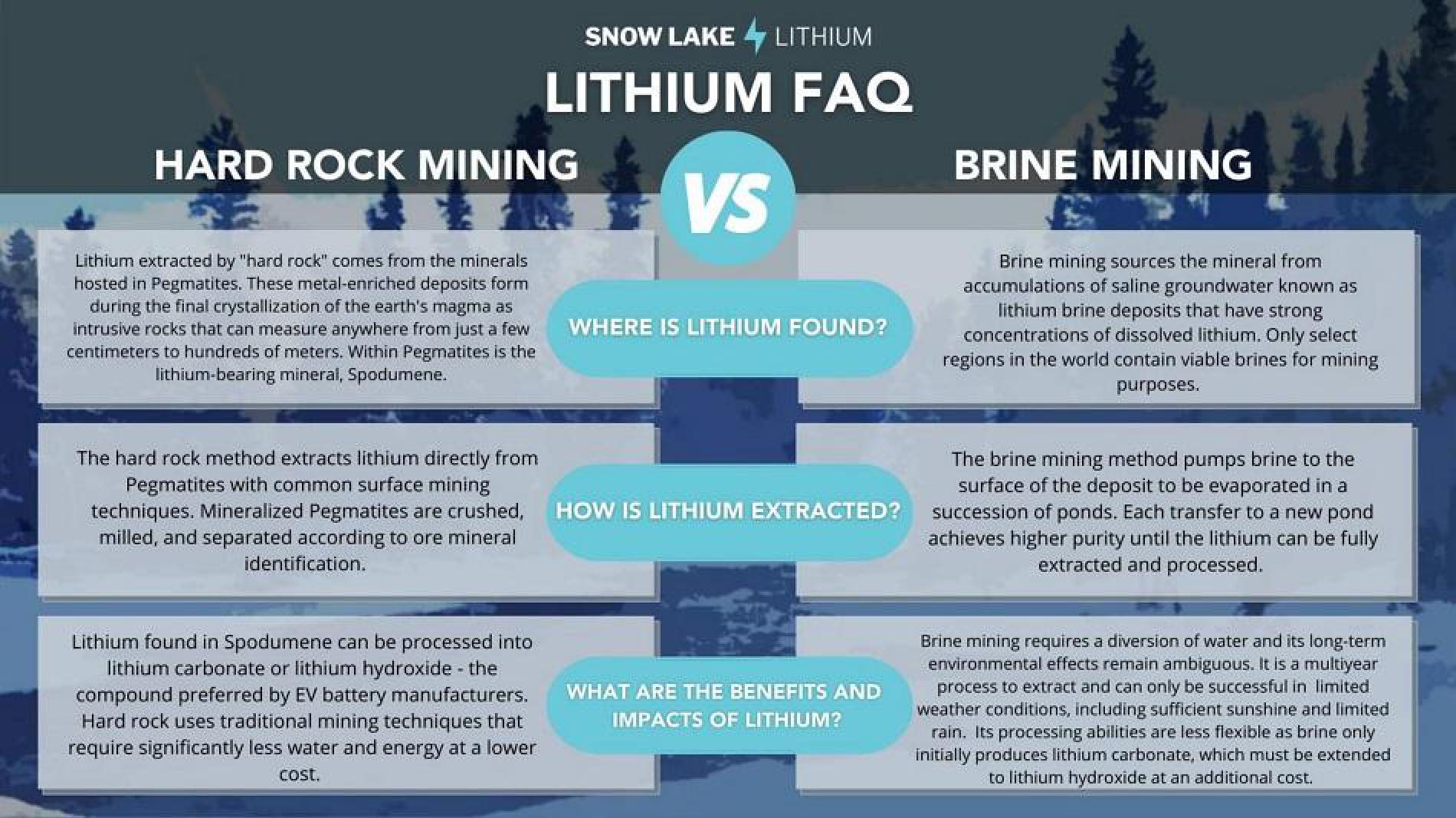Snow Lake Resources FWP Presentation Deck
HARD ROCK MINING
Lithium extracted by "hard rock" comes from the minerals
hosted in Pegmatites. These metal-enriched deposits form
during the final crystallization of the earth's magma as
intrusive rocks that can measure anywhere from just a few
centimeters to hundreds of meters. Within Pegmatites is the
lithium-bearing mineral, Spodumene.
The hard rock method extracts lithium directly from
Pegmatites with common surface mining
techniques. Mineralized Pegmatites are crushed,
milled, and separated according to ore mineral
identification.
SNOW LAKE 4 LITHIUM
LITHIUM FAQ
VS
Lithium found in Spodumene can be processed into
lithium carbonate or lithium hydroxide - the
compound preferred by EV battery manufacturers.
Hard rock uses traditional mining techniques that
require significantly less water and energy at a lower
cost.
WHERE IS LITHIUM FOUND?
HOW IS LITHIUM EXTRACTED?
WHAT ARE THE BENEFITS AND
IMPACTS OF LITHIUM?
BRINE MINING
Brine mining sources the mineral from
accumulations of saline groundwater known as
lithium brine deposits that have strong
concentrations of dissolved lithium. Only select
regions in the world contain viable brines for mining
purposes.
The brine mining method pumps brine to the
surface of the deposit to be evaporated in a
succession of ponds. Each transfer to a new pond
achieves higher purity until the lithium can be fully
extracted and processed.
Brine mining requires a diversion of water and its long-term
environmental effects remain ambiguous. It is a multiyear
process to extract and can only be successful in limited
weather conditions, including sufficient sunshine and limited
rain. Its processing abilities are less flexible as brine only
initially produces lithium carbonate, which must be extended
to lithium hydroxide at an additional cost.View entire presentation